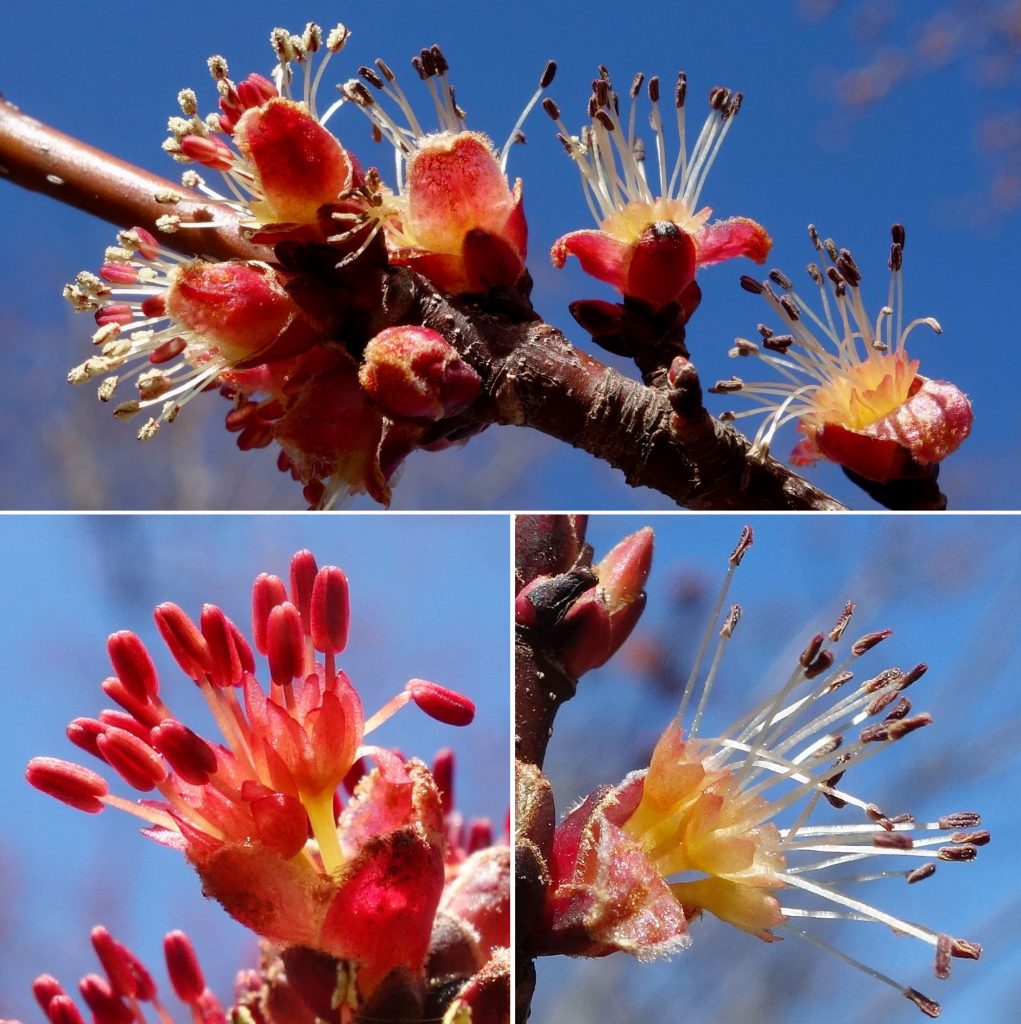One of the most wonderful and subtle joys of early spring flowering can be found in the maple collection of the Arnold Arboretum. Although still leafless, the red and silver maples (Acer rubrum and Acer saccharinum) are at peak flowering right now. If you cannot decide whether you prefer the flowers of red versus silver maples, you can split the difference and visit one of the hybrids between the two species, Acer x freemanii (Freeman maple). These specimens, too, are spectacular, bearing clusters of small flowers with subtle shades of red, pink, and yellow.
Individual trees of red and silver maples are typically unisexual, meaning that each tree either bears flowers that produce pollen (male function) or flowers that produce seeds (female function). However, a small percentage of red maple trees may produce both male and female flowers (bisexual). Among silver maples, as trees age, gender appears to shift from unisexual to bisexual. The Freeman maple hybrids pictured here are unisexual pollen producers, with long stamens (pollen-producing organs) emanating from each small flower.
As you look at the pictures of Freeman maples in bloom, you will see that when the stamens first emerge from the minute clusters of flowers they are bright red (lower left; 5679*A). They then split open at their ends and release yellow pollen (left-most flowers of upper image; 318-2006*A), and finally turn black and whither (lower right; 318-2006*A). It is all over in just a matter of days.
For a very nice article on gender in red maples, head over to Arnoldia. The diversity of gender systems among maples is amazing—long a fascination of many a botanist.


